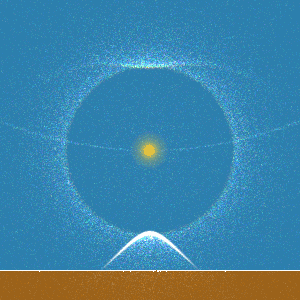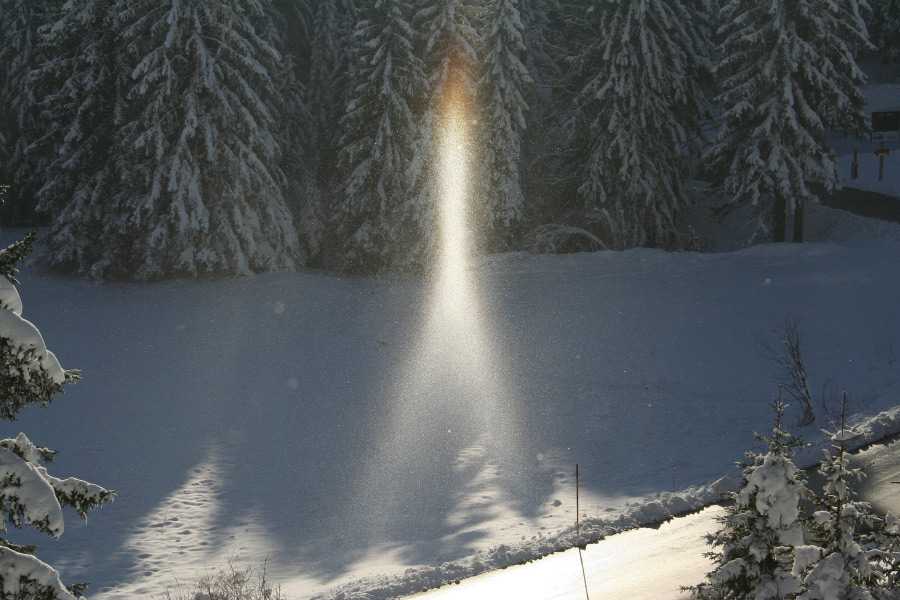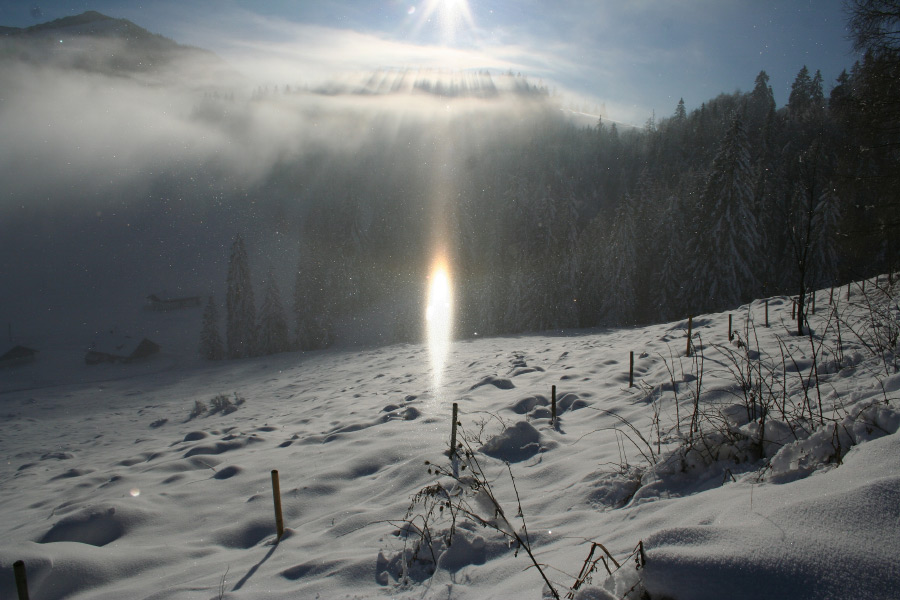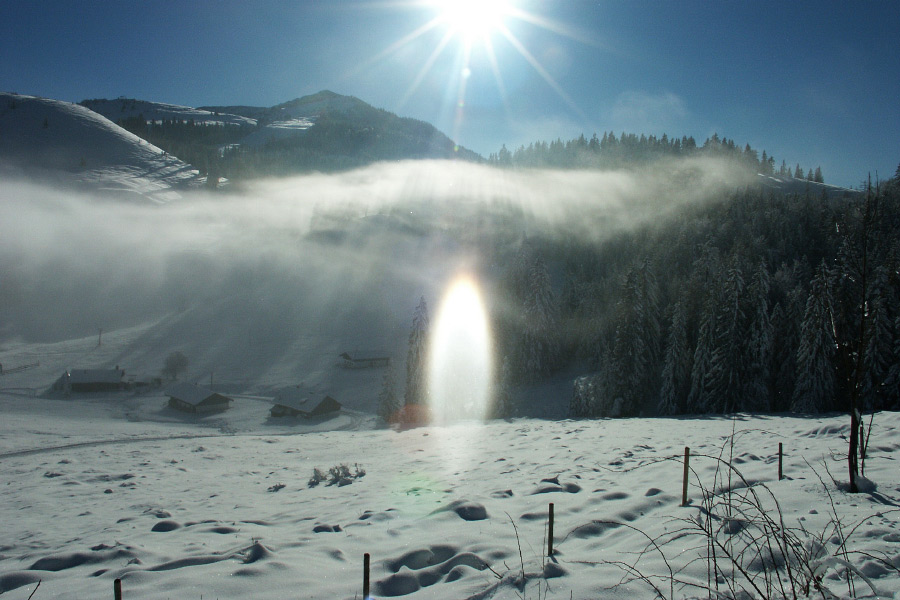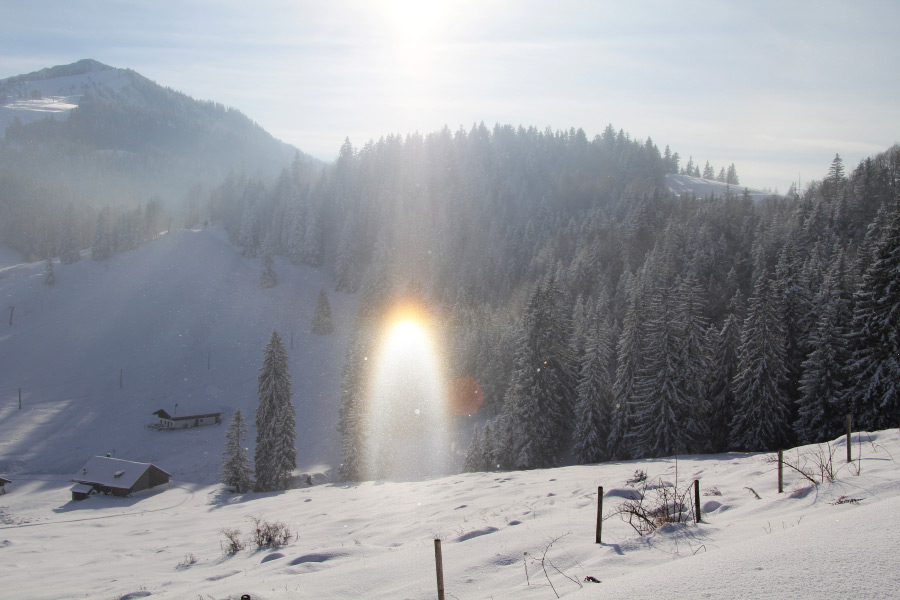On the
22° halo lies a type of halo that can take on various forms. Depending on the sun's altitude, a different image emerges. At a sun altitude of up to 32°, this halo phenomenon is called the lower and upper tangent arc of the 22° halo, and at sun altitudes above this, it's called a circumscribed halo. When the sun is low, the two branches of the
upper tangent arc create a sharp angle. As the sun's altitude increases, the branches increasingly approach the 22° halo. At the same time, they become longer and meet the lower tangent arc at a sun altitude of 32°. The resulting closed ring is called the
circumscribed halo. It touches the 22° halo above and below the sun. Initially, the circumscribed halo is still oval. As the sun's altitude rises, it becomes more circular and approaches the 22° halo. At a sun altitude of 70°, the circumscribed halo then almost coincides with the small halo. The circumscribed halo, like the tangent arcs, is more strongly colored than the 22° halo. It is reddish towards the sun and bluish on the outside. The lower tangent arc is quite rarely seen because it only appears at a sun position of more than 22° above the horizon. When the sun is below 22°, it is only visible in ice fog or from an elevated location (mountain, airplane).
The contact arcs and the circumscribed halo form in
horizontally aligned column crystals. The refraction angle is 60°. The light enters a prism surface and exits at the next but one. The light takes the same path with the
parhelia and the 22° ring. The various types of halos result only from the different orientation of the crystals.

